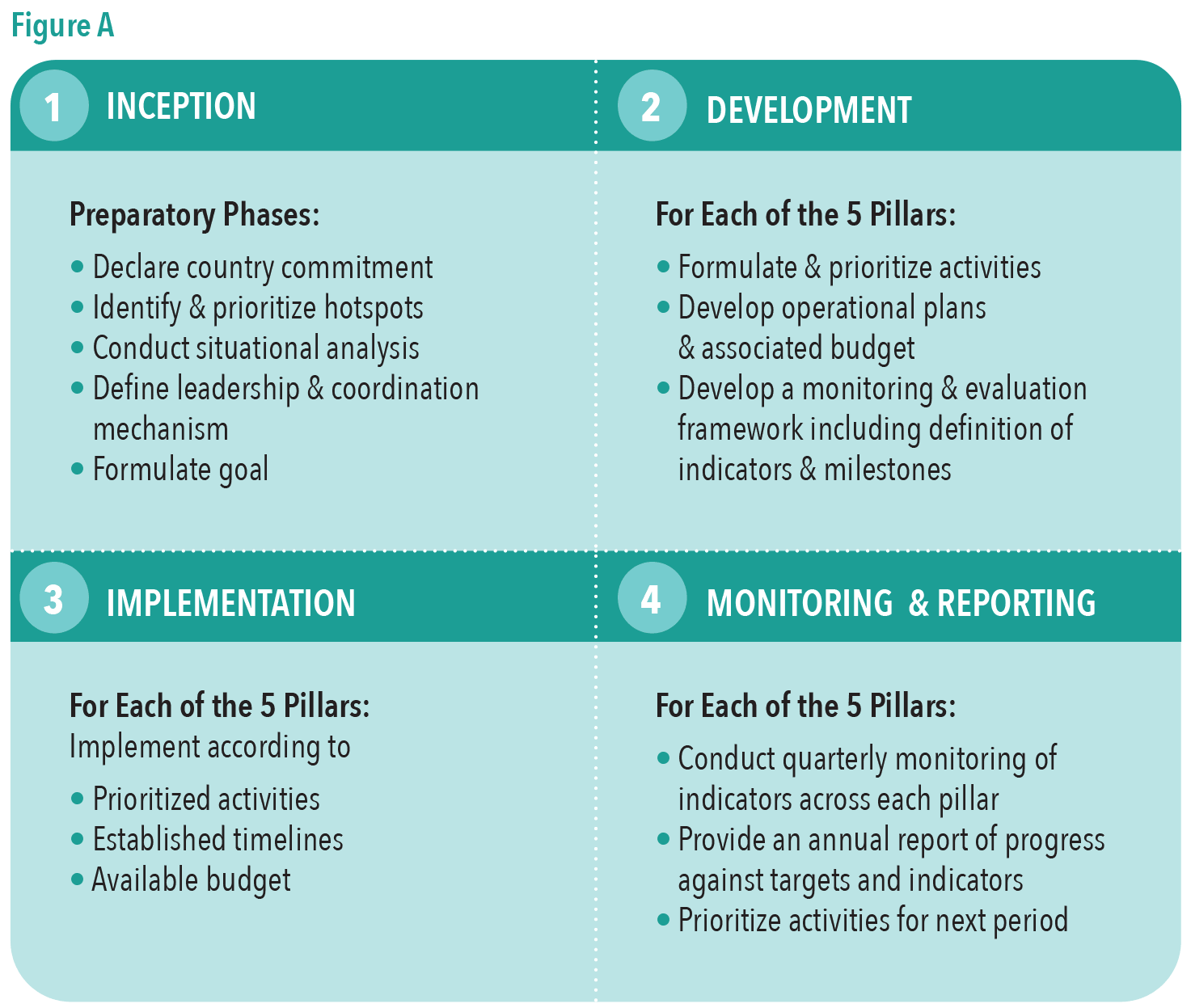The objective of this document is to provide practical guidance to countries in developing and monitoring the implementation of their NCPs .This document is aligned to the requirements of the Global Roadmap and the criteria that will be used by the GTFCC Independent Review Panel to review the NCPs . It also provides a set of indicators that can be used by countries to report progress on the implementation of their NCP.
This document is intended for professionals working in all relevant sectors of the national government (i.e., health, water, construction, finance, education, etc.), public health institutes and technical partners involved in cholera prevention and control activities .The process is also summarized in Appendix 1.
The conception and execution of an NCP can be divided into four phases, illustrated in Figure A on page nine . Of those, this document describes three steps of the process:
- Inception describes the preparatory phases for NCP development .
- Development provides guidance for the content of each technical pillar and for the development of a monitoring and evaluation framework for the implementation of the NCP.
- Monitoring & Reporting provides indication on the timelines for periodic reviews and reporting to national authorities, as well as the GTFCC .
GTFCC TOOLBOX & REFERENCES
- A call to action: launching the Global Roadmap to 2030
http://www.gtfcc.org/about-gtfcc/roadmap-2030/ - Cholera Outbreak Response Field Manual, October 2019
https://choleraoutbreak.org/ - Independent Review Panel Terms of Reference
http://www.gtfcc.org/wp-content/uploads/2019/11/gtfcc-terms-of-reference-review-panel.pdf
The implementation phase will be critical and dependent on the activities that each country will have identified to address its needs. This document does not provide specific guidance on how to conduct the implementation of the country NCP but provides basic principles such as the prioritization of activities based on their logic sequence (and the available resources that will be required).

Although in this document the development of a National Cholera Control Plan is schematically presented as a linear process, the true planning process is dynamic. The preparatory and development phases are interlinked, and the steps presented in the chart below may not be conducted sequentially.
Once implementation begins, regular monitoring and evaluation will feed into the annual review process and the plan will be revised over time in accordance with outcomes of the monitoring and evaluation process .





